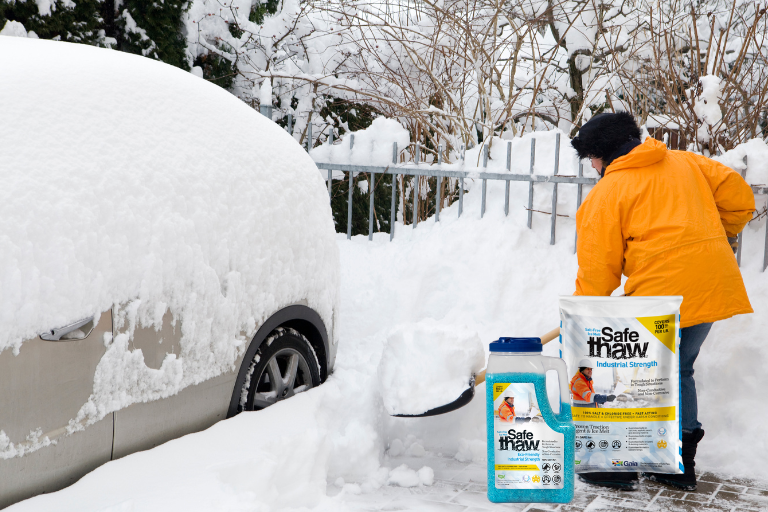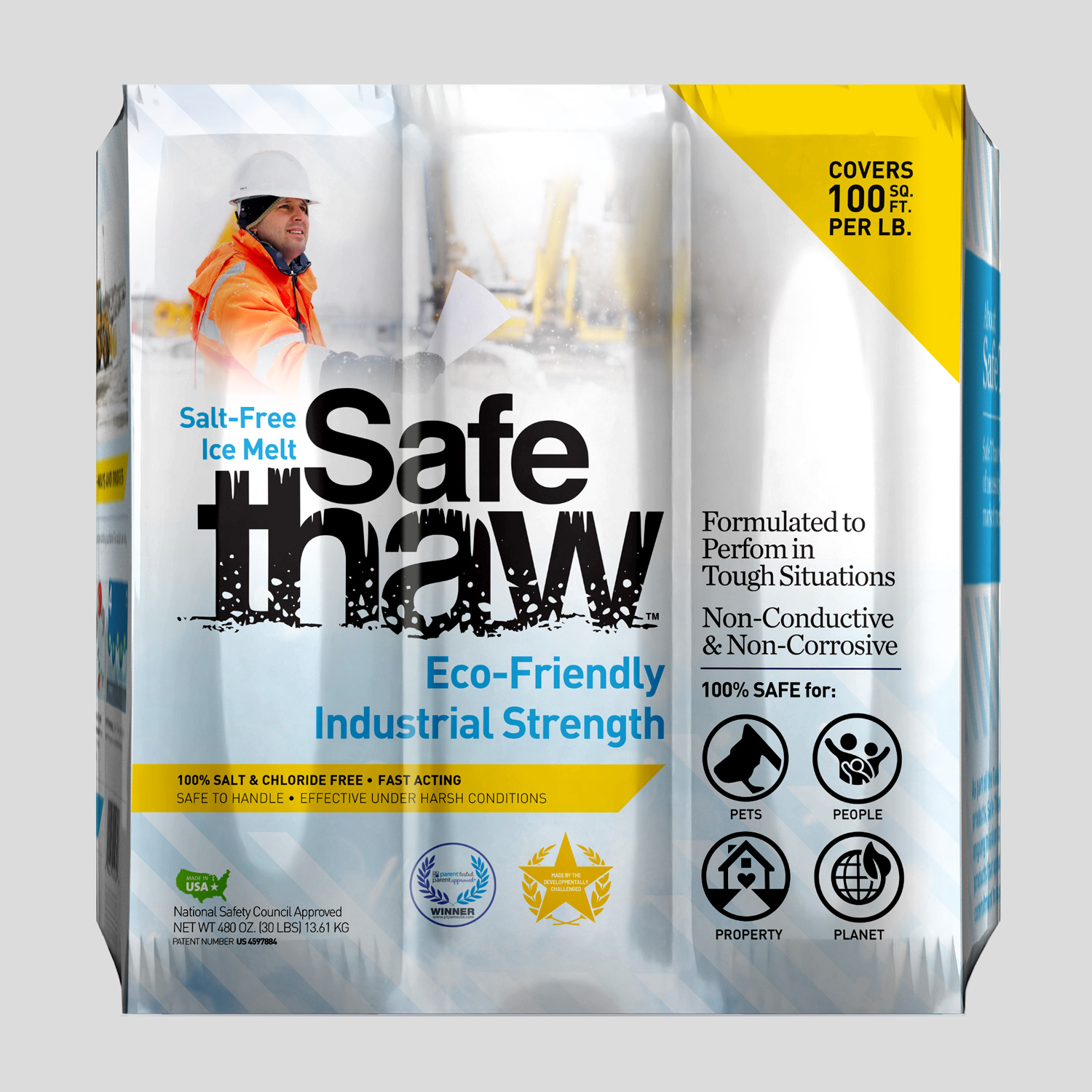Is Calcium Chloride Just Another Form Of Salt?

When winter strikes and pathways freeze, many turn to various substances to combat the icy conditions. Among the most common solutions is calcium chloride. Its ability to quickly melt ice and snow is well known, but a frequently asked question arises: is calcium chloride salt? Let’s dive into the intricacies of calcium chloride and discover its true nature.

Blizzards Are Here—Stock Up on Safe Thaw Today!
Safe Thaw was created as the ice management solution for tough winter environments. Ideal in commercial and industrial properties, shops, government agencies, bridges, and construction.
Understanding Calcium Chloride
So, is calcium chloride salt? At a molecular level, calcium chloride is a salt. Scientifically speaking, a salt is any compound formed from the reaction of an acid with a base. Calcium chloride is formed by the neutralization reaction of calcium hydroxide and hydrochloric acid. Its chemical formula is CaCl₂, showing that it consists of one calcium atom and two chlorine atoms.
Contrasting With Table Salt
However, when most people refer to “salt,” they are thinking of table salt, or sodium chloride (NaCl). While both calcium chloride and sodium chloride are salts, they differ in composition, properties, and uses.
- Composition: As mentioned, calcium chloride contains calcium and chlorine atoms, while sodium chloride has sodium and chlorine.
- Melting Ability: Calcium chloride can lower the freezing point of water more effectively than sodium chloride. This makes it a preferred choice for deicing in extremely cold conditions.
- Hygroscopic Nature: Calcium chloride is hygroscopic, meaning it can attract and retain water from its surroundings. This trait is useful in certain industrial applications but can be problematic in others.
Winter Storms Are Here!
Stay Safe with Our 100% Salt And Chloride-Free, Pet Safe Ice Melt.
The Negative Impacts Of Salts On Surfaces And The Environment
While salts, including calcium chloride and sodium chloride, are effective in melting ice, they come with a set of disadvantages:
- Corrosion: Salts can accelerate the corrosion of metals. This is especially concerning for vehicles and infrastructure like bridges.
- Damage To Vegetation: When the melted ice mixed with salt runs off, it can harm plants and trees by dehydrating them.
- Groundwater Contamination: Salt can seep into groundwater, affecting both human consumption and aquatic life.
- Surface Deterioration: Regular use of salt can lead to the degradation of concrete surfaces, leading to cracks and potholes.
It’s also worth noting that while calcium chloride is effective at melting ice, it can leave behind a slippery residue, which can be a hazard for pedestrians.
How Long Does It Take Dry Ice To Melt?
Now, shifting gears a bit, another common query related to cold substances is about dry ice. Dry ice is solid carbon dioxide, and it doesn’t melt into a liquid under atmospheric pressure. Instead, it sublimates, turning directly from a solid to a gas. The rate of sublimation depends on various factors, including the temperature and surface area. In general, a block of dry ice can sublimate entirely in 24 hours in a typical room temperature setting.
Safe Thaw: A Gentle Approach To Ice Melting
For those who want to avoid the detrimental impacts of salts like calcium chloride and sodium chloride, there’s an alternative: Safe Thaw. Safe Thaw is an industrial-use, granular ice melt that’s free from harsh chemicals and toxins. Its specially designed formula ensures that it effectively melts ice without the corrosive and environmentally harmful effects associated with common salts.
100% Salt & Chloride-Free Ice Melt for Winter Storm Protection.
Concluding Thoughts
So, is calcium chloride salt? In summary, while calcium chloride is technically a salt, it differs significantly from the table salt we sprinkle on our food. Although effective, its usage, like other salts, requires careful consideration due to its potential negative impacts. Alternatives like Safe Thaw offer a solution for those looking for effective yet gentle ice melting options. In all decisions, understanding the substance and its implications is key to making informed and beneficial choices.
Try Also Our Other Winter Safety Products:
Safe Paw
The Original and #1 Selling Pet and Child Safe Ice Melt for over 20 years. Guaranteed environmentally safe –It won’t harm animals or children, and it won’t damage your property. That’s Safe Paw. Safe Paw can change how winter affects our planet.

Walk On Ice
The handy disposable canister can be taken everywhere, with the same 100% naturally occurring minerals that provide instant traction on ice or snow. Use it on sidewalks, steps, or as an instant traction agent for your car.



